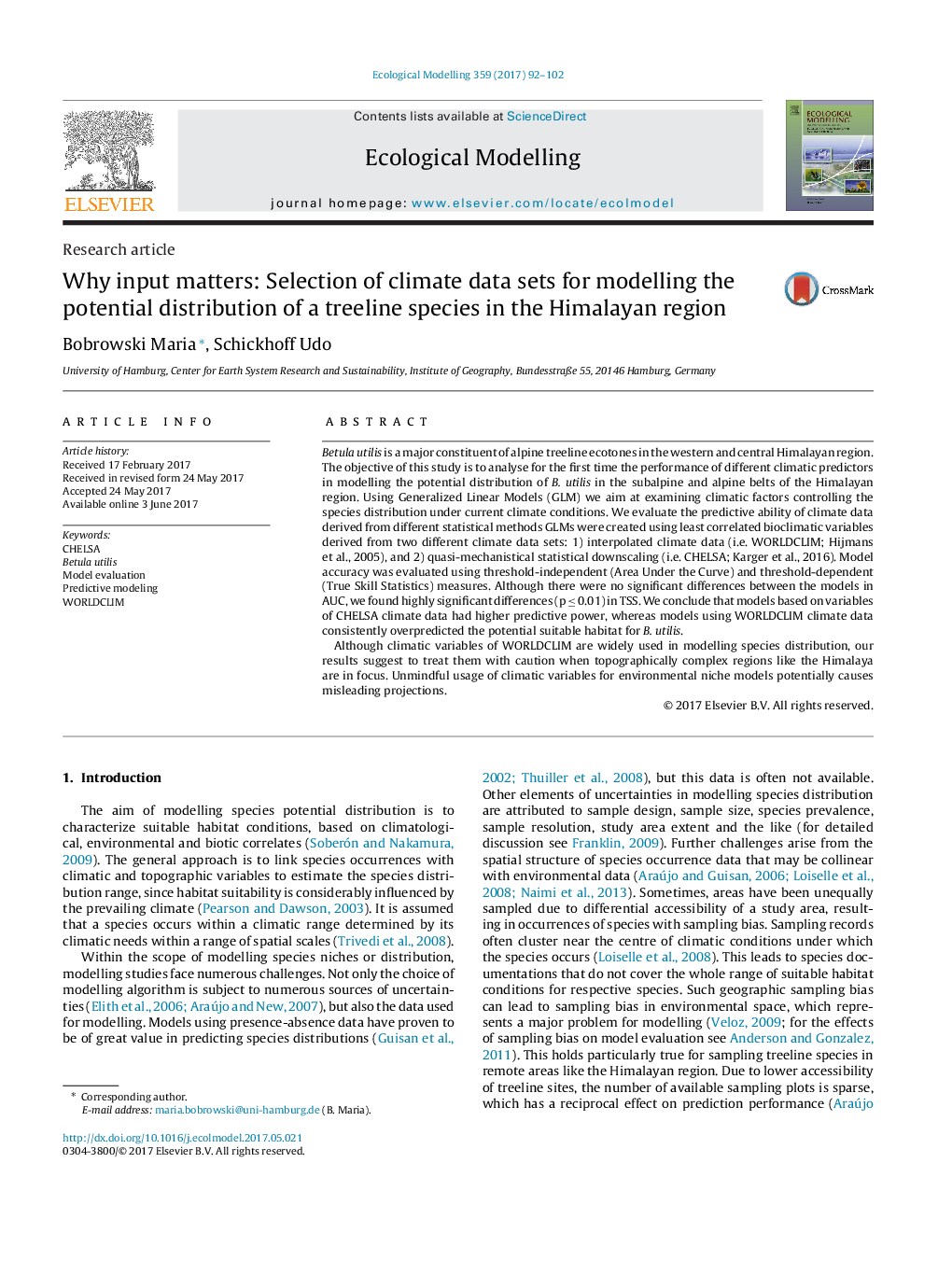| کد مقاله | کد نشریه | سال انتشار | مقاله انگلیسی | نسخه تمام متن |
|---|---|---|---|---|
| 5742123 | 1617388 | 2017 | 11 صفحه PDF | دانلود رایگان |
- Generalized Linear Models were used to model the potential distribution of Betula utilis in the Himalayan region.
- Evaluation of predictive ability between climate data sets derived from different statistical methods.
- Comparison of 'interpolated' (i.e. WORLDCLIM) and 'quasi-mechanistical statistical downscaling' (i.e. CHELSA) climate data.
- Models based CHELSA climate data had higher predictive power, WORLDCLIM consistently overpredicted the potential habitat.
- Unmindful usage of climatic variables for environmental niche models may potentially cause misleading projections.
Betula utilis is a major constituent of alpine treeline ecotones in the western and central Himalayan region. The objective of this study is to analyse for the first time the performance of different climatic predictors in modelling the potential distribution of B. utilis in the subalpine and alpine belts of the Himalayan region. Using Generalized Linear Models (GLM) we aim at examining climatic factors controlling the species distribution under current climate conditions. We evaluate the predictive ability of climate data derived from different statistical methods GLMs were created using least correlated bioclimatic variables derived from two different climate data sets: 1) interpolated climate data (i.e. WORLDCLIM; Hijmans et al., 2005), and 2) quasi-mechanistical statistical downscaling (i.e. CHELSA; Karger et al., 2016). Model accuracy was evaluated using threshold-independent (Area Under the Curve) and threshold-dependent (True Skill Statistics) measures. Although there were no significant differences between the models in AUC, we found highly significant differences (p â¤Â 0.01) in TSS. We conclude that models based on variables of CHELSA climate data had higher predictive power, whereas models using WORLDCLIM climate data consistently overpredicted the potential suitable habitat for B. utilis.Although climatic variables of WORLDCLIM are widely used in modelling species distribution, our results suggest to treat them with caution when topographically complex regions like the Himalaya are in focus. Unmindful usage of climatic variables for environmental niche models potentially causes misleading projections.
Journal: Ecological Modelling - Volume 359, 10 September 2017, Pages 92-102
